How hot is a habanero compared to a jalapeño? What's the Scoville scale ranking of common peppers? You'll get immediate answers with this practical reference guide designed for home cooks. Skip the scientific jargon - here's exactly what you need to know about pepper heat levels, safe handling techniques, and how to use each pepper in your cooking.
| Common Pepper | Scoville Heat Units | Heat Comparison | Safe for Beginners? |
|---|---|---|---|
| Bell Pepper | 0 SHU | Mild, sweet flavor | Yes |
| Jalapeño | 2,500-8,000 SHU | 10-15x hotter than bell pepper | Yes (remove ribs) |
| Serrano | 10,000-23,000 SHU | 3-4x hotter than jalapeño | With caution |
| Habanero | 100,000-350,000 SHU | 20-40x hotter than jalapeño | No (wear gloves) |
| Ghost Pepper | 855,000-1,041,427 SHU | 100-200x hotter than jalapeño | Absolute caution |
Table of Contents
- Quick Pepper Heat Reference
- Understanding Scoville Scale Basics
- Most Common Peppers Ranked by Heat
- How to Handle Spicy Peppers Safely
- Pepper Heat in Cooking: Practical Tips
- Why Heat Levels Vary Between Peppers
- What to Do When Too Much Heat
- Pepper Heat Levels by Cuisine
Quick Pepper Heat Reference
When searching for "how hot is a habanero" or "jalapeño vs serrano heat," this simplified guide gives you exactly what you need. Peppers fall into five practical categories for home cooking:
- Mild (0-5,000 SHU): Bell, Poblano, Anaheim - safe for all skill levels
- Medium (5,000-30,000 SHU): Jalapeño, Serrano, Chipotle - moderate heat
- Hot (30,000-100,000 SHU): Cayenne, Tabasco - noticeable kick
- Very Hot (100,000-500,000 SHU): Habanero, Scotch Bonnet - serious heat
- Extreme (500,000+ SHU): Ghost Pepper, Carolina Reaper - professional handling required

Understanding Scoville Scale Basics
The Scoville Scale measures pepper heat in Scoville Heat Units (SHU), representing how much dilution is needed before heat becomes undetectable. Modern labs use precise equipment rather than human testers, but the SHU measurement remains standard.
Key facts casual cooks need to know:
- Capsaicin causes the burning sensation - concentrated in white ribs, not seeds
- Heat perception varies by person - genetics affect tolerance significantly
- Color indicates ripeness - red peppers are often 10-15% hotter than green
- Dairy (not water) neutralizes heat - casein protein binds with capsaicin
Most Common Peppers Ranked by Heat
Forget confusing technical measurements - here's how popular peppers compare in practical cooking terms:
- Carolina Reaper (1,400,000-2,200,000 SHU) - 220x hotter than jalapeño
- Ghost Pepper (855,000-1,041,427 SHU) - use drops of extract only
- Habanero (100,000-350,000 SHU) - tropical fruit flavor with intense heat
- Thai Bird's Eye (50,000-225,000 SHU) - common in Asian cooking
- Cayenne (30,000-50,000 SHU) - classic hot sauce ingredient
- Serrano (10,000-23,000 SHU) - crisp texture for salsas
- Jalapeño (2,500-8,000 SHU) - versatile for stuffing and pickling
- Poblano (1,000-2,000 SHU) - mild when fresh, smoky when dried

How to Handle Spicy Peppers Safely
Protect yourself with these practical safety steps - especially important when working with habaneros or hotter peppers:
- Wear nitrile gloves when handling hot peppers (cotton offers no protection)
- Remove white ribs - they contain 70-90% of the capsaicin
- Cut peppers under running water to reduce airborne capsaicin
- Wash surfaces with vinegar solution (1:3 vinegar:water) after preparation
- Keep dairy nearby - milk or yogurt provides instant relief if you get pepper on skin
Emergency response: If you accidentally touch your eyes, flush with saline solution for 15 minutes. For mouth burn, swish with full-fat dairy for 30 seconds before swallowing.
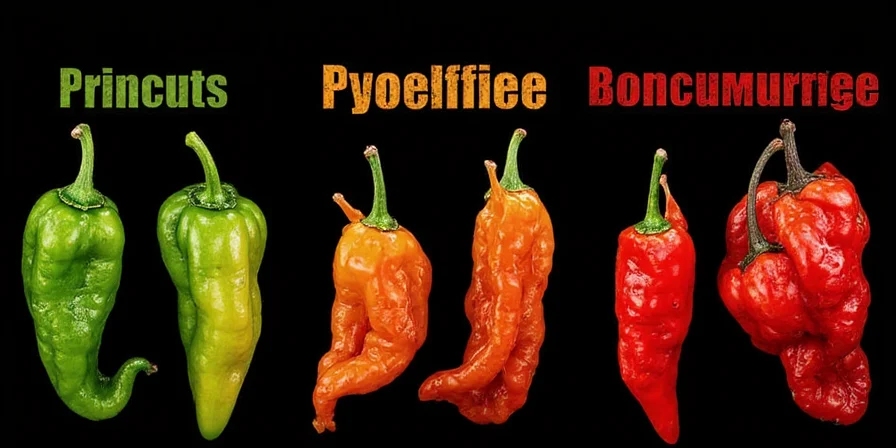
Pepper Heat in Cooking: Practical Tips
How to use different peppers effectively in your recipes:
- For mild heat: Use jalapeños with ribs removed - perfect for family-friendly dishes
- For noticeable kick: Add 1/4 habanero (with gloves!) to sauces for 4 servings
- For authentic Thai: Use 1-2 bird's eye chilies per person - add at the end
- When substituting: 1 serrano ≈ 2 jalapeños in heat; 1 habanero ≈ 8 jalapeños
- To reduce heat: Remove ribs and seeds, then soak in vinegar for 10 minutes
- To enhance flavor: Lightly roast peppers before using to develop complex notes
Common Mistakes to Avoid
- Using water to cool mouth (spreads capsaicin)
- Handling super-hots without protection (causes severe skin burns)
- Adding all peppers at beginning (heat intensifies during cooking)
- Not labeling containers with hot ingredients (safety hazard)
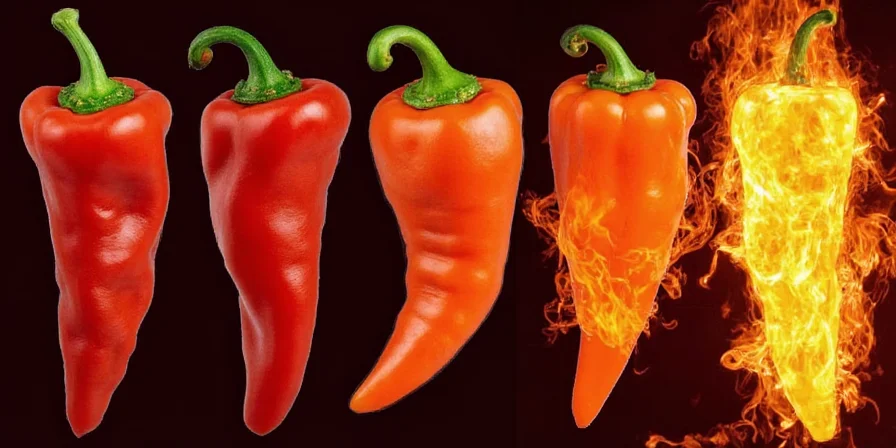
Why Heat Levels Vary Between Peppers
Pepper heat isn't consistent - these factors affect actual SHU in your kitchen:
- Growing conditions: Drought-stressed plants produce 20-30% more capsaicin
- Ripeness: Fully red peppers are often hotter than green counterparts
- Individual variation: Even on same plant, heat can vary 3x between peppers
- Preparation method: Cooking in oil concentrates heat; vinegar reduces perception
This explains why "how hot is a habanero" has no single answer - actual heat depends on these variables. When recipes call for specific peppers, consider these differences for consistent results.
What to Do When Too Much Heat
Rescue over-spiced dishes with these proven techniques:
- For soups/stews: Add 1/4 cup full-fat coconut milk per serving (dairy binds capsaicin)
- For sauces: Dilute with equal parts tomato paste or pureed vegetables
- For immediate mouth relief: Swish whole milk for 30 seconds before swallowing
- For skin contact: Apply 90% isopropyl alcohol, then moisturizer within 5 minutes
What NOT to do: Don't use water (spreads capsaicin), beer (alcohol too low), or toothpaste (causes chemical burns with capsaicin).
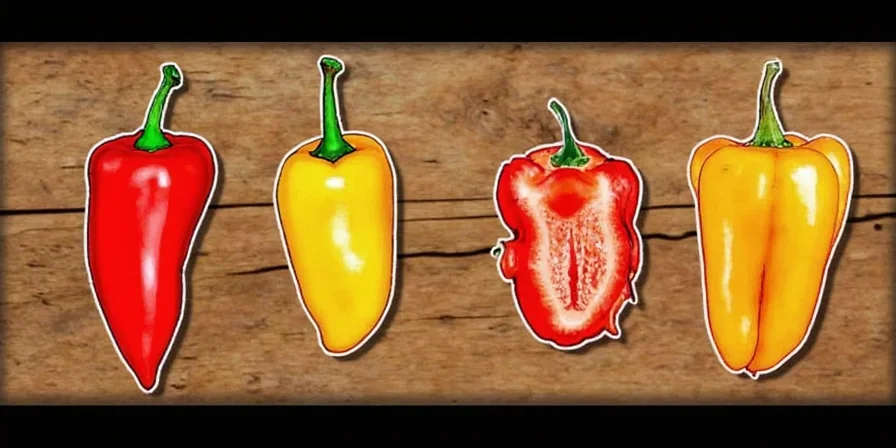
Pepper Heat Levels by Cuisine
How heat tolerance varies globally - helpful when recreating authentic dishes:
| Cuisine | Typical Heat Level | Common Pepper | Beginner Tip |
|---|---|---|---|
| Mexican | Moderate (5,000-30,000 SHU) | Jalapeño, Serrano | Add lime and avocado to balance heat |
| Thai | High (50,000-100,000 SHU) | Bird's Eye Chili | Add coconut milk early to moderate heat |
| Indian | Variable (20,000-100,000 SHU) | Green Chili, Kashmiri | Serve with raita (yogurt side dish) |
| Korean | Medium-High (10,000-50,000 SHU) | Gochugaru (flakes) | Fermentation reduces perceived heat |
| American | Low-Moderate (2,500-15,000 SHU) | Jalapeño, Cayenne | Start with half the recipe's pepper amount |
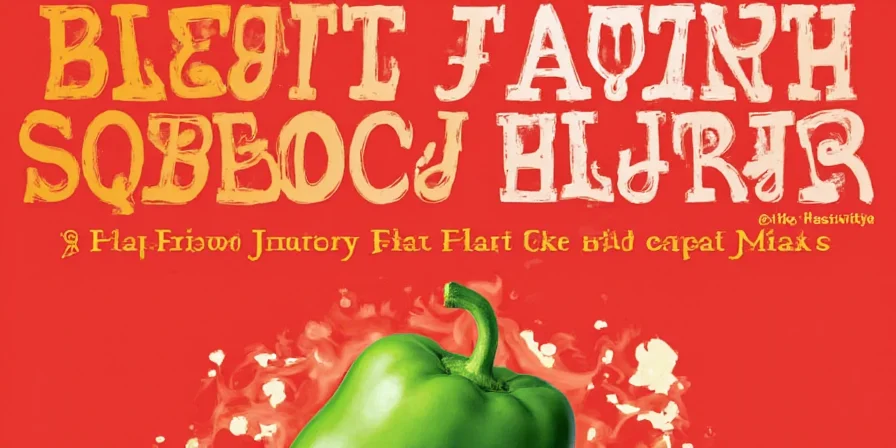
Final Pepper Selection Guide
Use this quick reference when deciding which pepper to use:
| Cooking Scenario | Recommended Pepper | Preparation Tip |
|---|---|---|
| Family-friendly salsa | Jalapeño (ribs removed) | Soak in vinegar for 10 minutes |
| Authentic Thai curry | Bird's Eye Chili | Add at very end of cooking |
| Spicy but approachable wings | Habanero (1/4 pepper) | Wear gloves; mix with honey |
| Mild smoky flavor | Poblano | Roast and peel for best flavor |
Remember: Always start with less pepper than you think you need. Heat perception lags by 10-15 minutes, and you can always add more but can't remove it once added. Keep dairy products nearby when experimenting with new peppers.
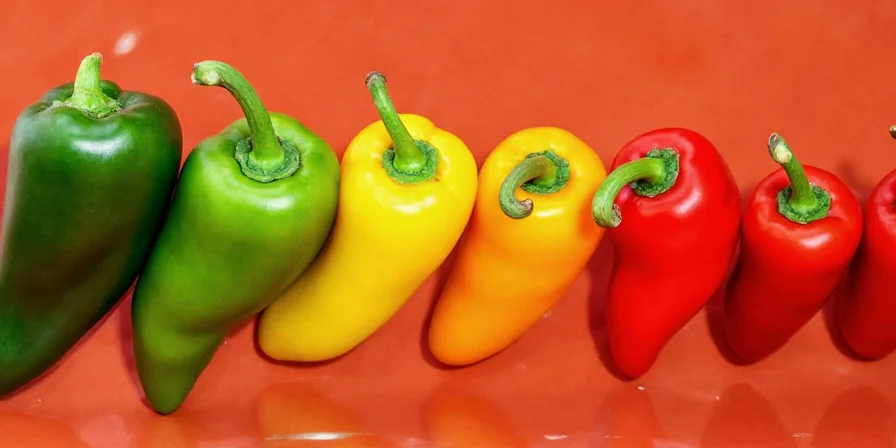











 浙公网安备
33010002000092号
浙公网安备
33010002000092号 浙B2-20120091-4
浙B2-20120091-4